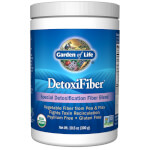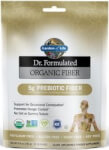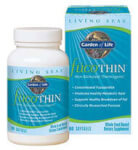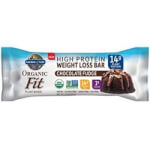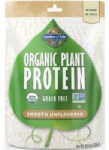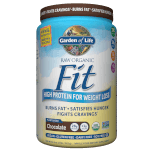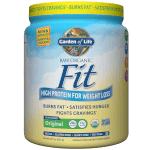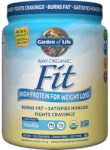There´s a fascinating story to fucoTHIN that needs to be shared. The developer of FucoThin was a Russian biochemist named Zakir Ramazanov, PhD, a classically trained biochemist and plant physiologist who graduated from the Soviet Union´s North Caucasian State University in 1978 at the top of his class. While serving with the Soviet army in Afghanistan in the late 1970s, Dr. Ramazanov discovered a tonic that boosted his mental and physical energy—a tea made from the golden yellow roots of a Siberian plant called Rhodiold rosea. A Siberian soldier in Dr. Ramazanov´s company received packets of Rhodiold in the care packages sent from home, so Dr. Ramazanov decided to give his tea a try. Rhodiola rosea, he learned, was a perennial plant that grows in dry, sandy ground at high altitudes in the Siberian arctic, and this herbal tonic would become a research focus after his return to civilian life.
Dr. Zakir Ramazanov
Following his stint as a Soviet soldier, Dr. Ramazanov became the head engineer at the Institute of Solar Energy, where he designed and constructed solar batteries and solar energy stations. It was there that he began experimenting with solar bioreactors and how they affected the cultivation of certain marine vegetables and algae, including spirulma and chlorella. As his career advanced, Dr. Ramazanov left the Soviet Union in 1989 and eventually made his way to the United States, where he accepted a research fellowship at Louisiana State University at Baton Rouge before he founded a company called National Bioscience Corp., headquartered in Chester, New York.
Dr. Ramazanov´s specialty was insolating phytonutrients and antioxidants found in land and ocean plants. For instance, the Russian scientist applied innovative technology to the extraction of lycopene, beta-carotene, and lutein from tomatoes, mushrooms, and algae; the extraction of antioxidants from fruits and vegetables; and the intensive biotechnological cultivation of health-promoting marine planrs or seaweed. Dr. Ramazanov helped introduce the healing properties of Rhodiola rosea to an American audience by serving as an essenrial contributor to The Rhodiola Revolution: Transform Your Health with the Herbal Breakthrough of the 21st Century by Richard P. Brown, Patricia L. Gerbarg, and Barbara Graham.
Fucozanthin from Sea Vegatables
But Dr. Ramazanov´s real passion was research into sea vegetables, particularly brown seaweed, because epidemiological data from some of rhe longest living and healthiest cultures on the planet—most notably the Japanese—showed that the human consumprion of brown seaweed portended tremendous health benefits. Around 2002 Dr. Ramazanov began having success isolating a carotenoid called fucoxanthin from brown seaweed. Carotenoids are a class of natural pigments found principally in plants and algae. Acting as biological antioxidants, carotenoids protect cells and tissues from the damaging effects of free radicals. Fucoxanthin, Dr. Ramazanov explained was the carotenoid or pigment that turned brown seaweed ´brown.´ This pigment prevented seaweed floating on the ocean surface from being scorched by the sun. Called wakame by the Japanese and a part of Asian diets for centuries, about the only time we´re served brown seaweed in this country is when we enjoy a bowl of miso soup or seaweed salad in a Japanese restaurant. Although fucozanthin was found in abundance in several different types of brown seaweed, the carotenoid was present in far lesser amounts in green and red sea vegetables.
FucoThin vs. Belly Fat
Dr. Ramazanov toid me that he believed fucoxanthin could regulate a protein called uncoupling protein 1, or UCP1, which controls the amount of fat stored in the body. UCP1, which regulates the activity of a key gene responsible for maintaining the body´s temperature, is found in white adipose tissue, or visceral fat.1 This type of fat, which usually surrounds the internal organs and sits under our bellies, is one of the major causes of ´middle-age spread.´ White adipose tissue isn´t that white; it more resembles a disgusting yellowish glob of tissue. This type of fat gathers toxins, leads to low-level inflammation, and harms people´s hormonal health.
Japanese Fucoxanthin Study
In the summer of 2006, news came of a study coming out of Hokkaido University in Sapporo, where Japanese researchers studied the effects of fucoxanthin on more than two hundred laboratory animals. The Japanese study found fucoxanthin effective in fighting flab stimulating the UCPl protein, which caused stored fat to break down.2 In tests on the laboratory animals, fucoxanthin resulted in a 5 percent to 10 percent reduction in weight. The Japanese researchers said that since the abdominal area contains abundant white adipose tissue, the compound might be particularly effective at shrinking oversized midsections.
Could fucoxanthin do the same for humans? Study leader Dr. Kazua Miyashita said his team hoped that fucoxanthin could be developed into a nutritional supplement that targeted harmful fat. Professor Miyashita said that their testing was the first to find that a natural food component had been shown to reduce fat by targeting the UCPl protein, but dieters shouldn´t eat a lot of miso soup or brown seaweed salad to lose weight because fucoxanthin was not easily absorbed from whole seaweed.
Russian Fucoxanthin Study
On the heels of the Japanese study came word from Dr. Ramazanov´s Russian sources regarding the results of two double-blind, randomized, placebo-controlled clinical trials involving 150 obese women. These studies (pending publication), a collaboration of multiple organizations including the Center of Modern Medicine and Russian Academy of Natural Sciences in Moscow, involved having overweight women follow a meal plan of 1,800 calories a day while taking fucoxanthin or a placebo. The two key results:
1. Those who received fucoxanthin lost an average of 14.5 pounds in just sixteen weeks, versus those who received the placebo pill, who lost only 3 pounds.
2. Participants taking fucoxanthin raised their metabolic rate an average of 18.2 percent. In addition, body fat loss was 11.8 pounds in the fucoxanthin group, compared to 2.8 pounds in the placebo group. That´s a 450 percent greater weight loss and 422 percent greater fat loss, respectively. The women taking fucoxanthin also received reductions in liver fat, blood pressure, triglyccrides, and C-reactive protein (CRP).
What the Russian scientists hypothesized was that fucoxanthin possessed strong thermogenic—or fat-burning—properties. Thermogenesis is defined as a process in which the body generates internal heat and thereby increases its metabolic rate, which in turn requires the utilization of internal stores of energy, such as fat. Translation: thermogenesis raises the temperature of the body´s calorie-burning furnace, which burns fat. It´s the reason why hibernating animals don´t freeze to death during a long, hard winter. Their bodies spend the entire winter burning up stored fat that they accumulated during the feeding season. The same principle could be applied to humans: when stored fat begins burning up, the weight will start coming off.
Another way to explain the thermogenic process is by starting with mitochondria, which are the cells´ powerhouses. What the fucoxanthin compound does is increase the UCP1 protein (also known as thermogenin) by boosting the metabolic rate within the fat cell so that it burns more fat. In fact, the research showed that users of fucoxanthin increased their metabolic rate by 18.2 percent to 24 percent, depending on the dosage. Participants who consumed the amount of fucoxanthin in three capsules had an average increase in their metabolic rate by 18.2 percent and began to notice results in five to six weeks, while those who took the equivalent of ten capsules increased their metabolic rate by nearly 24 percent and began to see results in two to three weeks. By contrast, green tea—which is known for providing an increase in metabolism—has been shown in clinical studies to raise the metabolic rate by only 4 percent. Taking fucozanthin is literally like charging your fat-burning batteries, supporting the metabolism, or breakdown, of fat in white adipose tissue.
Study Results
The clinical research also indicated that the metabolic boost from taking fucoxanthin did not stimulate the central nervous system, meaning it didn´t cause the jitters or lost sleep like caffeine, nicotine, or thyroid hormones. Dr. Ramazanov reported that the fucoxanthin was safe with no side effects, and it even provided other health benefits, including improved cardiovascular health, reduction of inflammation (a major cause of heart disease), healthy cholesterol and triglyceride levels, improvements in blood pressure levels, and healthy liver function. As a carotenoid, fucoxanthin was a powerful antioxidant that protected cells from free-radical damage.
Development of FucoThin
After learning of the incredible results of the clinical study on fucoxanthin, the professionals at Garden of Life worked with Dr. Ramazanov and his team to introduce fucoxanthin into the marketplace, employing the same doses as used in the Russian clinical research. The result was fucocoTHIN—a combination of fucoxanthin from two species of brown seaweed—undaria (wakame) and laminaria (kombu)—and pomegranate seed oil. By harvesting the brown seaweed at a young age, fucoTHIN delivers fucoxanthin in a concentration 250 to 500 times greater than by consuming sea vegetables alone. You´d have to drink rniso soup by the gallon or use your chopsticks on bowl after bowl of seaweed salad to get a fraction as much of fucoxanthin.
Introducing FucoTHIN
Garden of Life released fucoTHIN just before Jordan Rubin launched Healthy Toledo, great timing for the participants and great news for those following the Perfect Weight America program. What the Healthy Toledo participants were told is something that you also need to know. All the research showed that fucoTHIN´s fat-burning results took about five to six weeks to react after you started taking one capsule with each meal. The effects seemed to be gradual and measurable, providing a steady metabolic boost, but research suggested that by taking an advanced dosage of nine to ten capsules per day in divided doses, results could be noticed as early as two or three weeks. Either way, don´t buy a bottle and think it´s going to work right away. It takes time for your metabolism to shift.


